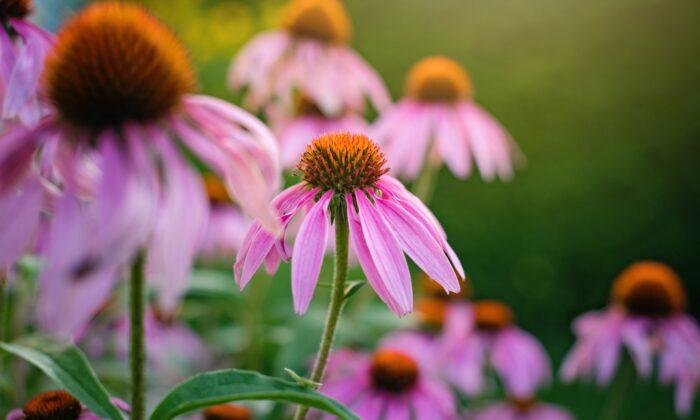Gardening doesn’t have to be a hobby reserved only for the retired. If you find yourself busier than usual with work, it doesn’t mean you should throw your gardening gloves away and give up gardening for good. There are so many plants out there that do just fine with minimal care and maintenance, making it as easy as ever for anyone to start growing!
Echinacea (Coneflower)
Also known as coneflowers, this beautiful plant comes in many different shades of colors and often resembles a daisy. They are one of the toughest plants in the flower kingdom, often thriving on neglect and tolerant to any growing condition. Easy to grow, these robust perennials provide steady blooms that last all summer long.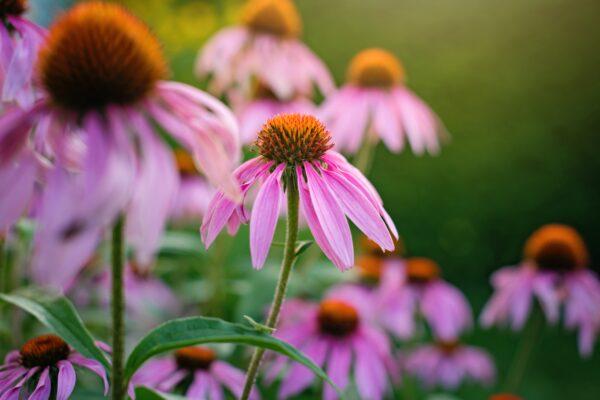
Peppermint (Mentha Piperita)
A wild-growing herb present throughout Europe, North America, and Australia, the prolific peppermint is a fantastic perennial herb to consider growing in your garden. Its leaves are said to be spicy and pungent in flavor, making it a great herb to use in tea, or adding to your summer lemonade.Simple to grow, they produce abundant mint leaves all season long, only going dormant in the winter months. Once dormant, they may look dead and the stems will appear dry and lifeless, but don’t worry because mint roots are particularly hardy and will survive the winter, emerging back again in spring.
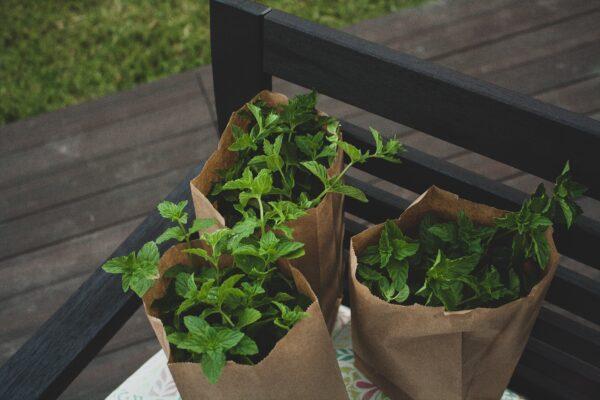
This plant thrives when placed in a part shade to full sun location-sunlight will help enhance its flavor. Planting it in full shade will not stop it from growing but will diminish the mint’s flavor. Grow this herb in partial shade to protect the leaves from burning, especially if you happen to live in a region with continuous temperatures over 85F.
Coral Honeysuckle - (Lonicera Sempervirens)
This perennial, woody vine gives rise to slightly fragrant red flowers that attract both butterflies and hummingbirds. Berries from this plant are especially captivating to birds like finches and robins. The scent of the coral honeysuckle is typically less potent than that of other varieties, like Japanese honeysuckle (Lonicera japonica). However, this variety of honeysuckle continues to charm and delight gardeners all around the world.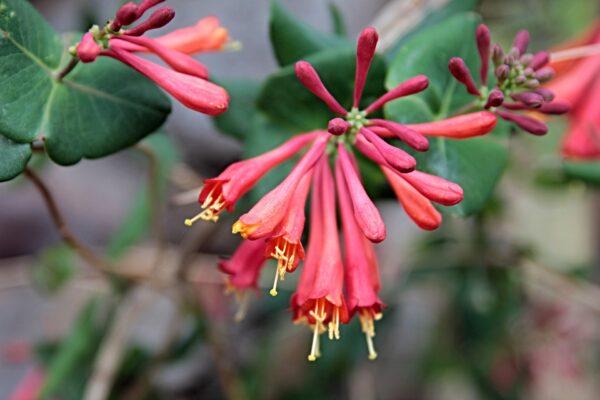
The trailing honeysuckle prefers to be grown in well-drained, acidic to moderately alkaline soil of between 5.5–8.0 pH—which also happens to be the typical soil pH of the average garden. The plant should be placed in a sunny position with at least 6 hours of sunlight per day. Its branches should be supported using a trellis so that the plant has something to climb on. They will also make a striking display when grown over an arch. The coral honeysuckle may also be kept in a large container if it cannot be placed directly into the ground. Consider using a high-quality well-draining potting soil as poor quality soil can lead to root rot and harbor fungal diseases. You may also add some perlite or pumice to increase aeration and ensure adequate drainage.
Marigold (Tagetes)
One of the easiest annual flowers to grow, the marigold boasts distinct blooms all summer long and comes in a myriad of colors including classic yellow, orange, red, and even variegated types like a fiery orange-red. Marigolds produce clusters of flowers that continue blooming repeatedly with minimal interference. Simply pinch off dying blossoms to encourage more growth.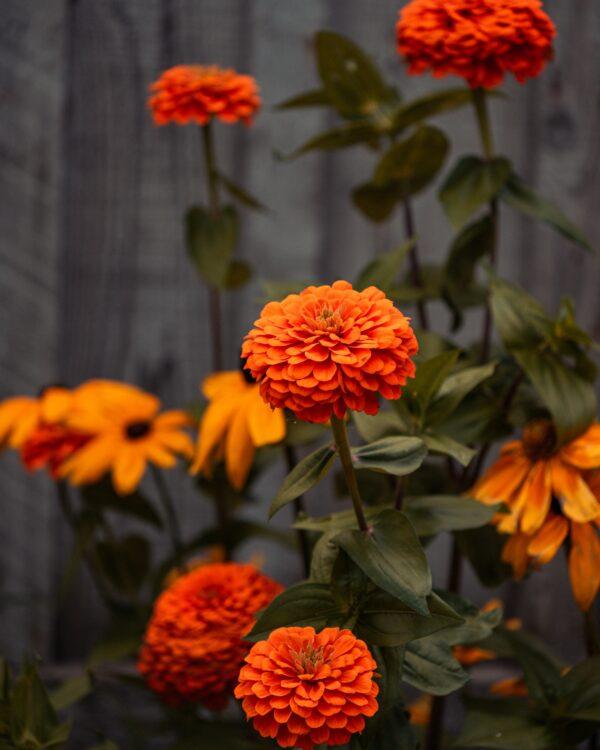
There are many different varieties to choose from, the most common ones being American marigolds, French marigolds, and English marigolds—with the latter not considered a ‘true’ marigold as it lacks the distinct pom-pom cluster characteristic typical of marigold flowers. The American marigold tends to grow taller and more upright, reaching a maximum of 3–4 feet in height and producing large, full flowers. Native to Central America, these plants do particularly well in dry, drought-like conditions and don’t require incessant watering to thrive. French marigolds are bushier and smaller than their American cousin, but still produce elegant clusters of bright blooms. They grow from 6 inches to 2 feet tall and make great edging plants. French marigolds are better suited to rainier regions and thus require more watering.
Marigolds also make great companion plants and are wonderful pest repellants for herbs and vegetables. Consider planting marigolds with your tomato plants to ward off harmful nematodes (microscopic worms) in the soil that attack the roots of garden vegetables. Their scent also wards off mosquitoes from your garden. Marigolds grow synchronously with basil, enhancing the growth of your herbs. The pair have a fantastic insect-repelling partnership. Their combined aroma is particularly undesirable to pests, keeping your plants healthy and damage-free.
Any of these plants make a great, low-maintenance addition to your garden. Hardy and drought-tolerant, they can withstand some neglect. Some of them may even help other plants from becoming damaged by pests, with minimal interference on your part. Simply provide a sprinkling of water every few days and watch them bloom effortlessly, providing your garden with vibrancy and color.

